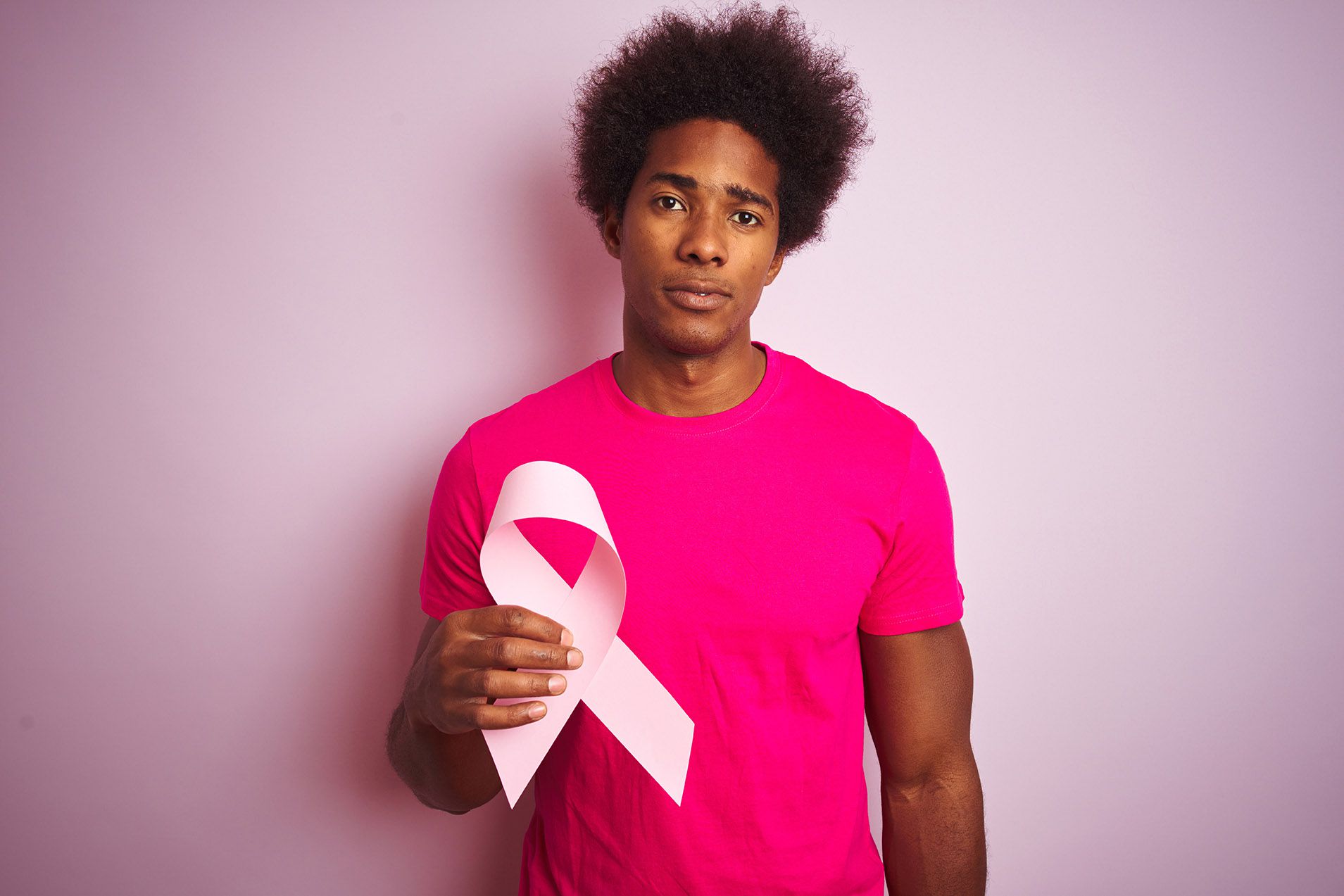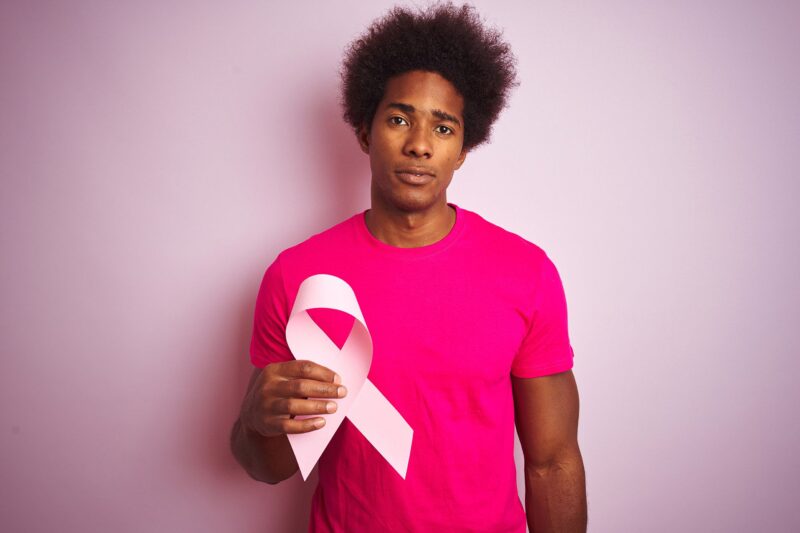
When 52-year-old Bayo (not real name) first felt a small lump under his nipple, he brushed it off. “Probably just muscle strain,” he told himself. Six months later, the lump grew, and his nipple started to retract. A hospital visit confirmed what he never imagined possible: breast cancer.
His story is uncommon but not unique, and it reveals a painful truth: men can get breast cancer, too.
Most people hear ‘breast cancer’ and instantly think of women. But few realise that men can get it too. The numbers are small, but the risk is real.
Globally, men account for just 0.5–1% of all breast cancer cases, according to the World Health Organisation (WHO). In Nigeria, studies show male breast cancer makes up between 1.7% and 9% of diagnosed cases.
Rare, yes, but not impossible. Again, because it’s so uncommon, most men don’t even consider the possibility until it’s too late.
‘The Rarity Has Made Awareness Low’
Dr Oluwadunsin Oluwaseyitan Adesopo, a medical doctor and reproductive health educator passionate about population health and public awareness, says rarity is one of the biggest challenges.
“The vast majority of breast cancer cases are found among women, but in rare cases, men can have it too,” she explains. “Unfortunately, the rarity has made awareness very low, and that’s why most men present late.”
In Nigeria, most breast cancer campaigns are female-focused, from hospital posters to October awareness drives, leaving little room for male education.
The message unintentionally reinforces the idea that breast cancer is “not a man’s concern.” As a result, countless men like Bayo miss early warning signs or delay seeking help.
What Causes Breast Cancer in Men?
While there’s no single cause, several risk factors can raise the odds:
– Hormonal Imbalance and High Estrogen Levels
Men naturally have small amounts of estrogen, but when these levels rise (due to obesity, chronic liver disease, or certain medications), the hormone can stimulate breast tissue growth and increase the risk of cancer.
– Genetic Mutations
Inherited mutations in the BRCA1 or BRCA2 genes significantly raise a man’s risk of developing breast cancer. A family history of breast or ovarian cancer on either side should prompt regular screening.
– Klinefelter Syndrome
This rare chromosomal disorder (where a man has an extra X chromosome, XXY instead of XY) causes higher estrogen and lower testosterone levels, creating conditions for breast tissue growth and increased cancer risk.
– Age
The risk increases with age, typically affecting men aged 50 to 70, when hormone regulation naturally weakens and cell damage accumulates over time.
– Radiation Exposure
Men who have undergone radiation therapy to the chest area — for example, during treatment for Hodgkin’s lymphoma — may develop breast cancer years later.
– Lifestyle Factors
Excessive alcohol consumption, lack of exercise, smoking, and diets high in processed or fatty foods can indirectly increase the risk by contributing to hormonal imbalance and weight gain.
“Men with high levels of estrogen due to medical conditions such as liver disease or obesity are at higher risk,” Dr Oluwadunsin says. “Also, a strong family history of breast cancer, genetic mutations like BRCA, and chromosomal conditions such as Klinefelter syndrome can increase susceptibility.”
Other factors like age, hormone therapy for prostate cancer, and unhealthy lifestyles also contribute. Essentially, anything that increases estrogen levels or interferes with hormonal balance can make a difference.
‘The Earliest Sign Is Usually Painless’
Unlike women, men rarely do self-checks. Partly because they don’t think they need to. But the signs are similar, and understanding them can make all the difference.
– Painless Lump or Thickening
The most common early sign is a firm, painless lump beneath the nipple or areola. Men tend to ignore it until it becomes larger or uncomfortable.
– Nipple Retraction or Inversion
When the nipple begins to pull inward instead of pointing outward, it could mean a tumour beneath is tugging on the tissue.
– Skin Changes
Watch for redness, puckering, scaling, or a texture that looks like an orange peel (peau d’orange). These are subtle but serious signs of underlying inflammation or tumour growth.
– Nipple Discharge
Any fluid from the nipple (clear, yellow, or bloody) is abnormal in men and warrants immediate medical attention.
– Pain, Swelling, or Tenderness
While the early stages are usually painless, later stages can cause discomfort or visible swelling in one side of the chest.
“The earliest sign is usually a painless lump near or under the nipple,” Dr Oluwadunsin notes. “Other symptoms can include nipple retraction, discharge, or changes in skin texture.”
She stresses that early detection saves lives. “Men with significant risk factors should do monthly self-checks and see a doctor immediately if they notice anything unusual.”
Treatment Options for Male Breast Cancer
While rare, treatment for male breast cancer largely mirrors that of female breast cancer, though tailored for men’s physiology and hormonal balance.
1. Surgery
The most common first-line treatment is a mastectomy: a surgical removal of the affected breast tissue, sometimes including nearby lymph nodes if cancer has spread.
2. Radiation Therapy
This helps destroy remaining cancer cells after surgery or shrink tumours before surgery. It’s often used for advanced or aggressive cases.
3. Chemotherapy
Powerful drugs are used to kill cancer cells or stop their growth. Depending on the stage, chemotherapy may come before or after surgery.
4. Hormone Therapy
Since many male breast cancers are estrogen-receptor positive, hormone-blocking drugs like tamoxifen are used to prevent estrogen from feeding the cancer’s growth.
5. Targeted Therapy
In cases where the tumour shows specific genetic markers (like HER2 positivity), targeted drugs can attack only the cancer cells without harming healthy tissue.







